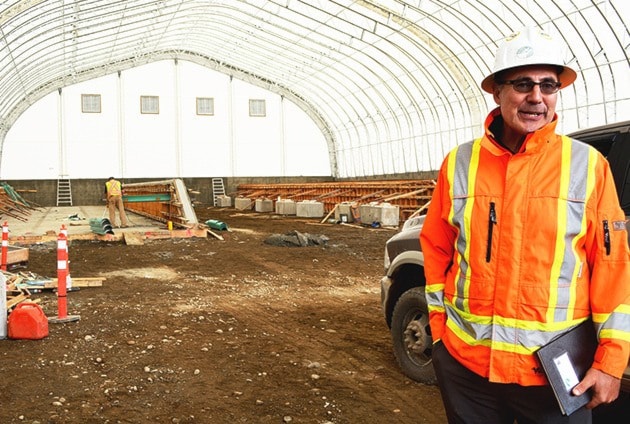THE KITIMAT-STIKINE regional district’s $17.5 million project to change the way garbage is to be handled in Terrace, Thornhill and in the surrounding rural areas, was put on display Sept. 16 during a tour of local elected officials and others.
Following several years of work preceded by years of planning, those on the tour were given a glimpse of how things should work beginning Nov. 1.
The plan is to divert as much waste as possible into various recycling streams, process organic material for compost and then dispose of anything left over.
Key to the plan has been the construction of a large landfill facility at Forceman Ridge, located approximately 35 kilometres south of Terrace off of Hwy37 South and close to Onion Lake.
It is to handle all waste after recyclables have been taken out, work that will go on at a transfer station located immediately adjacent to the current Thornhill landfill.
That landfill will be closed down later this year as well as the one on Kalum Lake Road operated by the City of Terrace, which is considered to have reached its capacity and which leaks pollutants.
Forceman Ridge, which won’t be open to the public because the regional district wants people to use the new transfer station or curbside collection instead, will also take pumped out septic tank liquids and solids.
At the opening last week, regional district official Roger Tooms said workers will practice running the transfer station as of Oct. 3.
It will be open to the public just three days each week to encourage people to use their various curbside collection services instead.
“We don’t want you waiting in line or paying (to bring in items). If you bring more than one material, you have to drive across the scales each time for each material so there are built in deterrents,” said Tooms.
Payments to use the transfer station begin with a minimum $10 fee generally, rising to $55 a tonne for metal, $99 a tonne for organic material and $110 a tonne for animal carcasses of 50 kilograms or less, and $110 for garbage, construction and demolition waste of more than five cubic metres and land clearing waste of less than five cubic metres.
Work at the Thornhill dump/transfer station involved preparing a cap of clay to place over the existing dump footprint, reducing leachate by keeping rain and other material from soaking into the landfill’s material.
A leachate collection system will also be installed as will a system to collect landfill gas. There is also a plan to collect leachate from existing waste and treat it in a pond and through a subsurface wetland. Cattails will be placed as well to treat water before it leaves the site.
Part of the wholesale move to the new way of handling waste involved a ban as of Sept. 1 on paper and cardboard being accepted at the Terrace and Thornhill landfills. Organics will also be banned sometime in November. It will also contribute to extending the lifespan of Forceman Ridge to 100 years.
Lead project engineer Tony Sperling of the firm Sperling Hansen, said that Forceman Ridge, its compost building and the Thornhill transfer station are to be the best of their kind in Canada and possibly the world, going above and beyond current standards.
Companies involved in the projects are all from the northwest or from the northeastern portion of B.C. except for one company from Richmond, keeping about $14 million of the $17.7 million spent on the project in the north, said Sperling. A return of gas taxes the federal government collects, which amounts to $2.8 million, helped defray the overall cost.
